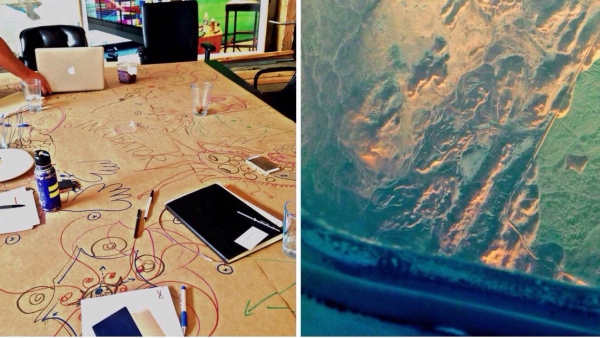From November 3rd to the 7th I had the incredible opportunity to visit ZERO1 in San Jose, California to meet with the team at ZERO1, the representative from the U.S. State Department, and the other three artists invited to the AAI program. I was coming from London, so even the change of vibe and the breeze of the Bay—instead of the cold Thames—was already a good promise for an energizing week.
The Orientation at ZERO1 was perhaps the most illuminating moment so far in this process of researching, ideating, and most importantly finding inspiration in whatever piece of news about the Philippines I could find for my project. So definitely, human contact and thoughtful conversations with peers are great rewards for working on this ambitious initiative, especially when you spend months prior to the meeting writing drafts, reading articles, preparing images, etc. with connections only being through the computer screen… But the good news is that amazing people were finally there to meet one another beyond the glossy surface of our laptops.
On day one, Kate Spacek (self-proclaimed Kickin’ Kate in the ice breaker activity) welcomed the group with a huge smile and an agenda that looked so meticulously put together that it even included a time slot to walk around the block and stretch out! We moved through the agenda so quickly that just that first day was incredibly productive.
During day two, the group was a bit more relaxed and very productive conversations around the structure of the program, projects and proposed workshops started to emerge. For me, one of the highlights of this four-day meeting was a small session with Barbara Goldstein, an expert in Public Art and Board member at ZERO1. Barbara’s experience dealing with this kind of project was very evident even in the way she initiated conversation with us as the artists.
Barbara asked the artists to really consider what is the question that connects the pieces to this puzzle. This very question is the same that audiences always start with when looking or experiencing the artwork, and therefore invites them to engage with the artists’ intention. At the same time, with Barbara’s guidance, each artist analyzed the different interests and questions that were somehow less evident when thinking solo. Again, the question of “what is the question?” was the key for each of us to explore and plan more realistic ways to engage the communities we’ll be working with during the project.
Perhaps we all came to Orientation with more questions than certainties, which was absolutely productive. It was also good to be reminded that sometimes our role as artists isn’t just to provide completed ideas and products, or defined experiences. Instead, as artists, we can take the lead and explore creative ways of asking one another about the big and simple questions that surround our everyday spaces and our own communities which somehow remain unheard.

